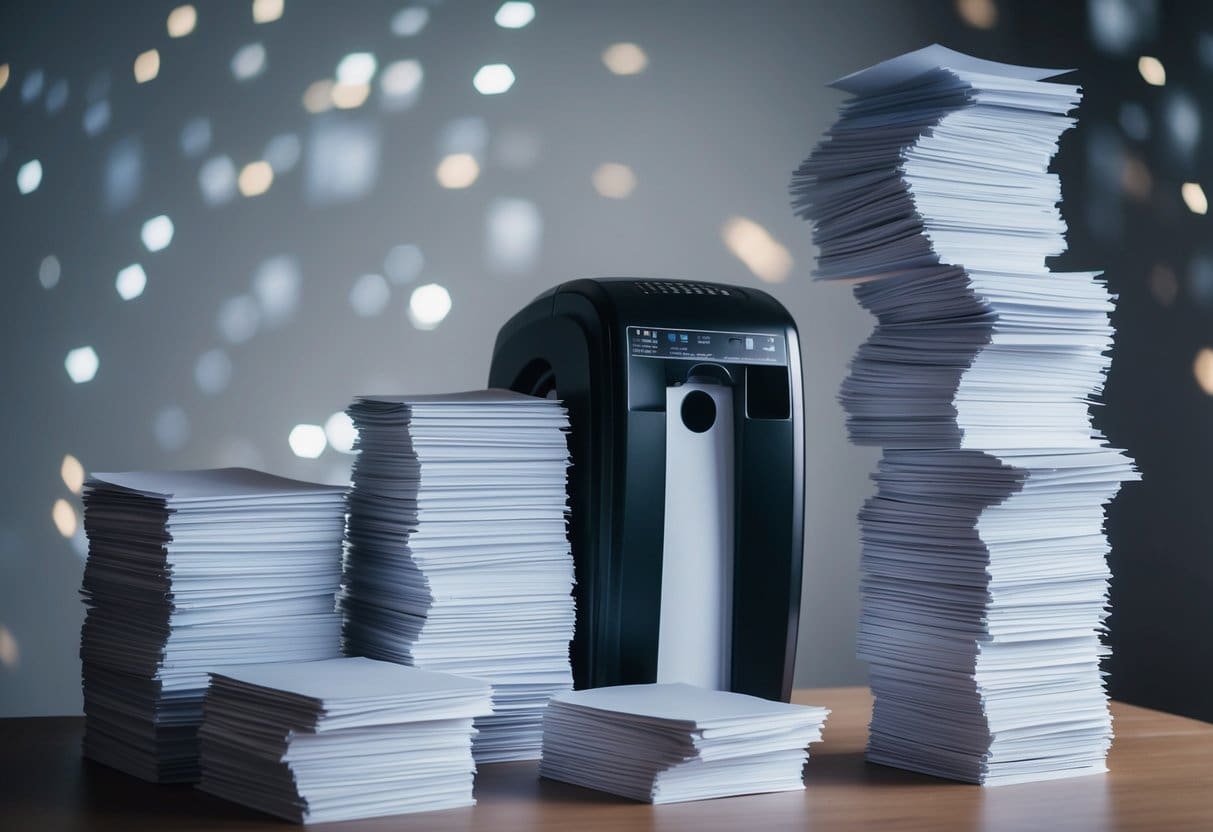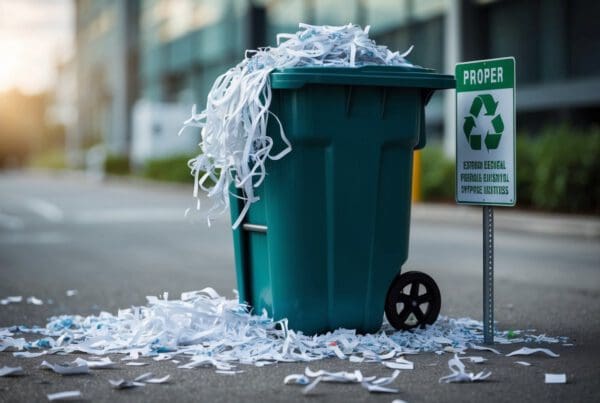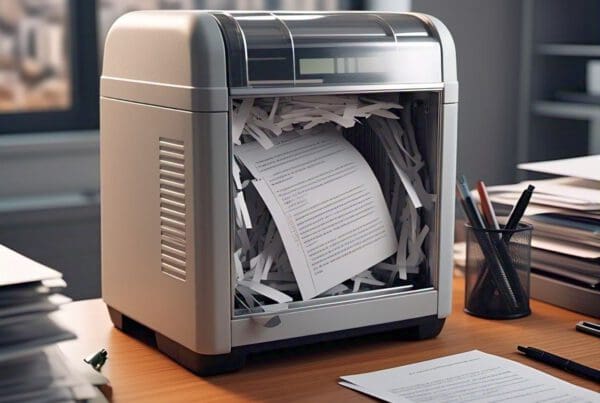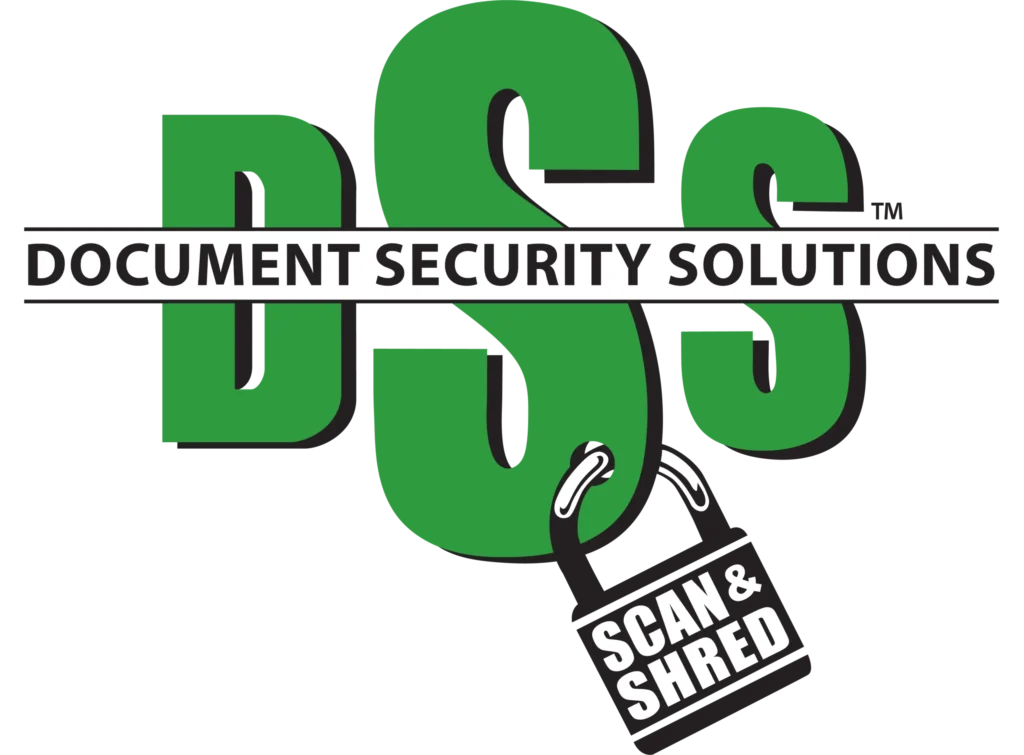Understanding Paper Shredding Services
When it comes to paper shredding services, the variety of options available can cater to different needs. Professional shredding services help maintain confidentiality and ensure compliance with legal standards.
Types of Shredding Services
There are several types of shredding services designed to fit different requirements. Mobile shredding involves a truck arriving at your location, enabling us to watch the shredding process on-site. Drop-off shredding lets us bring documents to a facility. On-site shredding means shredding occurs at your place, while off-site shredding involves transporting documents to another location for destruction. We can choose between scheduled shredding services for regular needs or a one-time purge for large quantities of documents. Each option offers unique benefits depending on our security and convenience needs.
Benefits of Professional Shredding
Professional shredding provides several advantages. It is more secure than using personal shredders because it ensures proper disposal. This service saves us time and resources, allowing us to focus on our core activities without worrying about data breaches. Professional shredding offers efficient and consistent results. We also enjoy peace of mind knowing that certified organizations handle our documents, which reduces risks associated with identity theft or data mismanagement. Using a professional service can help meet our compliance requirements for document disposal, safeguarding us from potential legal issues related to the mishandling of sensitive information.
Security Protocols and Compliance Requirements
Security is a key aspect of paper shredding services. Service providers follow stringent security protocols to protect our confidential information. These often include secure containers for document collection and transport. There are procedures for proper document destruction that meet industry standards. Compliance with various compliance requirements, such as HIPAA or FACTA, ensures that we adhere to regulations concerning data privacy and document disposal. By following these requirements, shredding services not only secure our documents but also help us avoid penalties. This attention to detail and adherence to rules give us confidence that our sensitive information remains protected at all times.
Determining Cost Factors for Shredding Documents
When assessing the cost of paper shredding, several key factors must be considered. Document volume, service type, and possible additional needs impact the overall price we might face.
Impact of Document Volume on Shredding Cost
The volume of documents is a primary factor in determining the cost of shredding. Larger volumes typically lead to higher costs.
We often find that companies offer tiered pricing based on weight or number of boxes. For those with small amounts of paper, it can be more cost-effective to use community shredding events or drop-off services.
To get a more precise cost estimate, it’s important to know the average cost per pound or box for the service provider. Higher volumes might qualify for bulk discounts, making document destruction more affordable.
Service Type and Frequency
Service type and frequency also influence the cost. We often choose between one-time purges and regular scheduled shredding services.
One-time purges are suitable for large clean-ups and are usually more expensive per visit than scheduled services.
Scheduled services provide regular pickups, which can reduce costs due to ongoing agreements. We should also consider factors like location and availability of mobile shredding versus off-site shredding, as they can affect pricing differently.
Additional Services and Certificates of Destruction
Additional services might increase the shredding costs. These include convenience options such as pickup and delivery, secure bins, and emergency shredding.
Some businesses require certificates of destruction as proof of document disposal. This can be important for compliance reasons but may add to the cost. We should evaluate which additional services are truly necessary for our needs and budget.
Offering insights into these cost factors helps us make informed decisions regarding document destruction services.
Volume-Specific Shredding Options

When choosing paper shredding services, consider both one-time projects and regular schedules. We explore how volume affects service choices in document shredding.
Bulk One-Time Shredding Projects
For large, one-time shredding needs, bulk shredding services are a great choice. These services handle massive volumes efficiently, saving both time and money. They are ideal for events like office clean-outs or when disposing of old records.
We find that companies offer competitive rates when documents are shredded in bulk. This option minimizes the hassle by providing on-site or off-site shredding. On-site shredding happens right at the location, ensuring security. Off-site services collect the documents and shred them at secure facilities.
Regularly Scheduled Shredding for Businesses
For businesses with ongoing shredding needs, regularly scheduled services are beneficial. These services are tailored to match specific shredding schedules, such as weekly, bi-weekly, or monthly. This routine approach ensures that document disposal is handled without disruption.
Scheduled services offer the advantage of predictability. We know when shredding occurs, and this helps in planning document disposal. The consistent shredding schedule prevents accumulation of sensitive documents, maintaining office space and security. Different levels of service can be set based on the quantity of documents handled per cycle.
Optimizing Shredding Service Value
Choosing the right shredding service can save money and increase efficiency. Volume affects cost in significant ways, so understanding the differences between on-site and off-site shredding services is crucial for finding the best value.
Analyzing On-Site vs Off-Site Shredding Cost
When considering cost, on-site shredding involves a shredding truck coming to our location. This option is secure since we can witness the shredding process. However, it often comes with higher prices because of fuel costs and the time staff spend traveling.
Off-site shredding means we drop our paper at a provider’s facility or they pick it up. This service is usually cheaper since it allows for the bulk processing of documents. We lose some transparency, but for many, the cost savings make it attractive.
Mobile shredding services combine the best of both worlds. They provide convenience and security by bringing a capable shredding truck to our site. The price might be higher than drop-off solutions, but it balances security with value. Options vary, so it’s important to weigh each against our specific needs.
Additional Considerations in Shredding
When it comes to shredding, we need to consider more than just costs. Environmental effects, data security, and certifications can heavily influence our choices. By examining each of these areas, we can make informed decisions about the shredding process.
Environmental Impact and Shredding Equipment
Choosing the right shredding equipment can affect our environmental footprint. Cross-cut shredders are popular due to their efficient destruction capability, turning pieces into confetti. However, they consume more energy than strip-cut models.
When disposing of shredded materials, we should ensure they are recycled properly. On-site document destruction can reduce transportation emissions.
Moreover, shredding hard drives is another aspect to consider. Hard drive destruction demands specialized tools that may have different environmental impacts than paper shredders. These details help us stay environmentally responsible while ensuring sensitive information’s safety.
Data Security and the Risk of Data Breaches
Protecting sensitive documents is crucial, which makes understanding our shredding choices essential. Cross-cut shredders provide a higher level of security compared to strip-cut shredders, making it difficult for anyone to piece together documents.
Data breaches pose significant threats, especially with hard drives. We must follow secure destruction methods. On-site document and hard drive destruction allow us to oversee the process without risking exposure during transport.
Our commitment to data security means consistently evaluating and updating the processes that involve sensitive information. By doing so, we can prevent potential risks linked to data breaches.
Certification Standards: ISO 9001
Complying with standards like ISO 9001 reinforces our commitment to quality. This certification ensures our shredding procedures meet strict requirements. It can involve periodic audits, helping us maintain consistency and reliability.
For document destruction, ISO 9001 offers a framework. It guides us on how to handle sensitive data and ensure secure disposal. These standards cover both paper shredding and hard drive destruction.
Ensuring our shredding practices align with ISO 9001 gives clients peace of mind about our capabilities and reliability. This reassurance builds trust, helping us uphold high standards in document handling and destruction.





